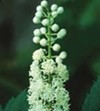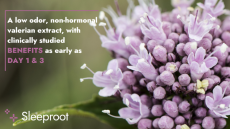Harvest data on top-selling herbs reveals tonnage rollercoaster ride

Data on the four ingredients was supplied to the AHPA by raw material suppliers, who were asked to provide information on quantities of cultivated and wild-harvested material, fresh, and dried.
Black cohosh
AHPA information analyst Dr Merle Zimmermann said that black cohosh harvests had been particularly volatile in recent years, with tonnages rising sharply in 2003 and 2004, plummeting in 2005, rebounding in 2006-8, dropping in 2009 and then rebounding strongly again in 2010.
“Though volumes continue to vary each year, the current harvest report suggests the market maintains a high demand for this commodity, with typical boom years remaining above 150 dried tons reported harvested," he said.
Cascara sagrada
Meanwhile, the effect of removing cascara sagrada bark extracts from the OTC drug marketplace as a laxative ingredient in late 2002 did not seem to have a lasting impact on harvest tonnages, which have grown steadily since 2002, notes Zimmermann.
“Harvests of this crop continue to increase and reached a new high of 203 tons in 2009, remaining above 172 tons every year since 2006.”
Slippery elm bark
Harvests of slippery elm dried bark have been on a general upward trend since 2000, dipping sharply in 2004 and 2009 but rebounding strongly the following year, much like black cohosh, said Zimmerman.
“Recent harvests of slippery elm dried bark showed a similar pattern of results as black cohosh root.”
Goldenseal root
However, data on golden seal root shows a far more consistent trend, with harvests hovering between 37 and 44 tons between 2004 and 2010, he added.
“While combined wild and cultivated dried goldenseal root reported harvests do not show the same magnitude of variation over the survey period, the range of reported harvests from 37 to 44 tons since 2004 showed a slight slump to 34 tons in 2009, before a reported recovery of 36 tons in 2010, which is near the low end of the range previously seen in 2006.”
The full AHPA Tonnage Surveys of Select North American Wild-Harvested Plants, 2006-2010, will be published later this year.















